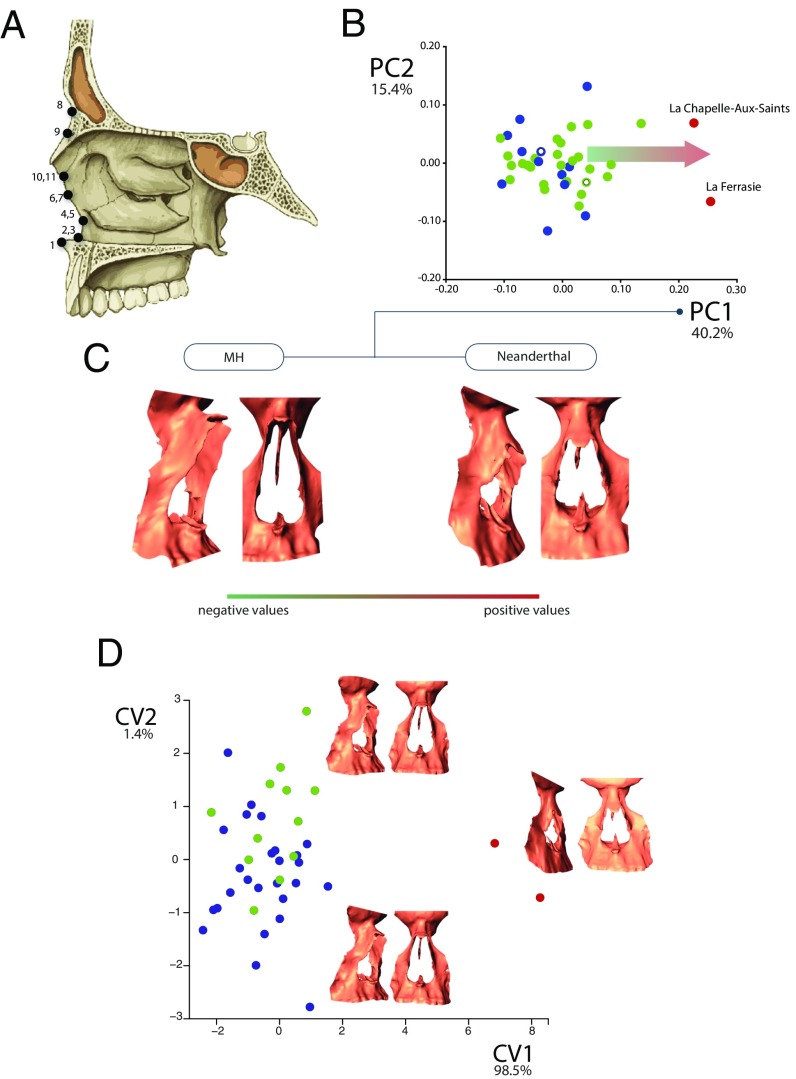Fig. 1.
Nasal morphological variation between MHs and Neanderthals as seen by principal component analysis and canonical variate analysis. (A) Scheme representing the anatomical landmarks placed on the external and internal osseous nasal structures (SI Appendix, Table S1). (B) First two PCs of shape change. NEA, blue dots; Neanderthals, red dots; SWE, green dots. SWE-93776 and NEA-2116236 specimens are indicated with empty dots. The arrow represents the displacement across the morphospace used to obtain the Neanderthal soft anatomy departing from the MH internal cavity, including the mucosa and turbinate soft structures. (C) Internal nasal cavity warped shape changes occurring across the first PC. The shape change defining the MH nose involve a general narrowing of the nose, both in their superior and inferior parts, along with an anterior-posterior alignment of the most anterior part of the concha with the external nasal border. The Neanderthal anatomy, conversely, is characterized by broader noses in general, along with a deflection of the anterior limit of the concha, which is placed on a more medial position in relation to the external border of the nose. In addition, an inspection on the sagittal plane of these shape changes indicate that MH noses present a more anterior projection of the medial part of the nasal border, whereas Neanderthals present, in general, a more flat nasal plane. (D) First and second canonical axes obtained from the first five PCs depicting shape changes that most differentiate the three groups (Neanderthals, SWE, NEA) in terms of nasal shape. The centroid shape of each group is presented as a warped internal nose. Discriminant functions among the three groups, with P values obtained after 10,000 permutations are as follows: SWE-Neanderthal Mahalanobis distance: 11.5 (P = 0.006). NEA-Neanderthal Mahalanobis distance: 55.3 (P = 0.029). SWE-NEA Mahalanobis distance: 2.48 (P = 0.005).

